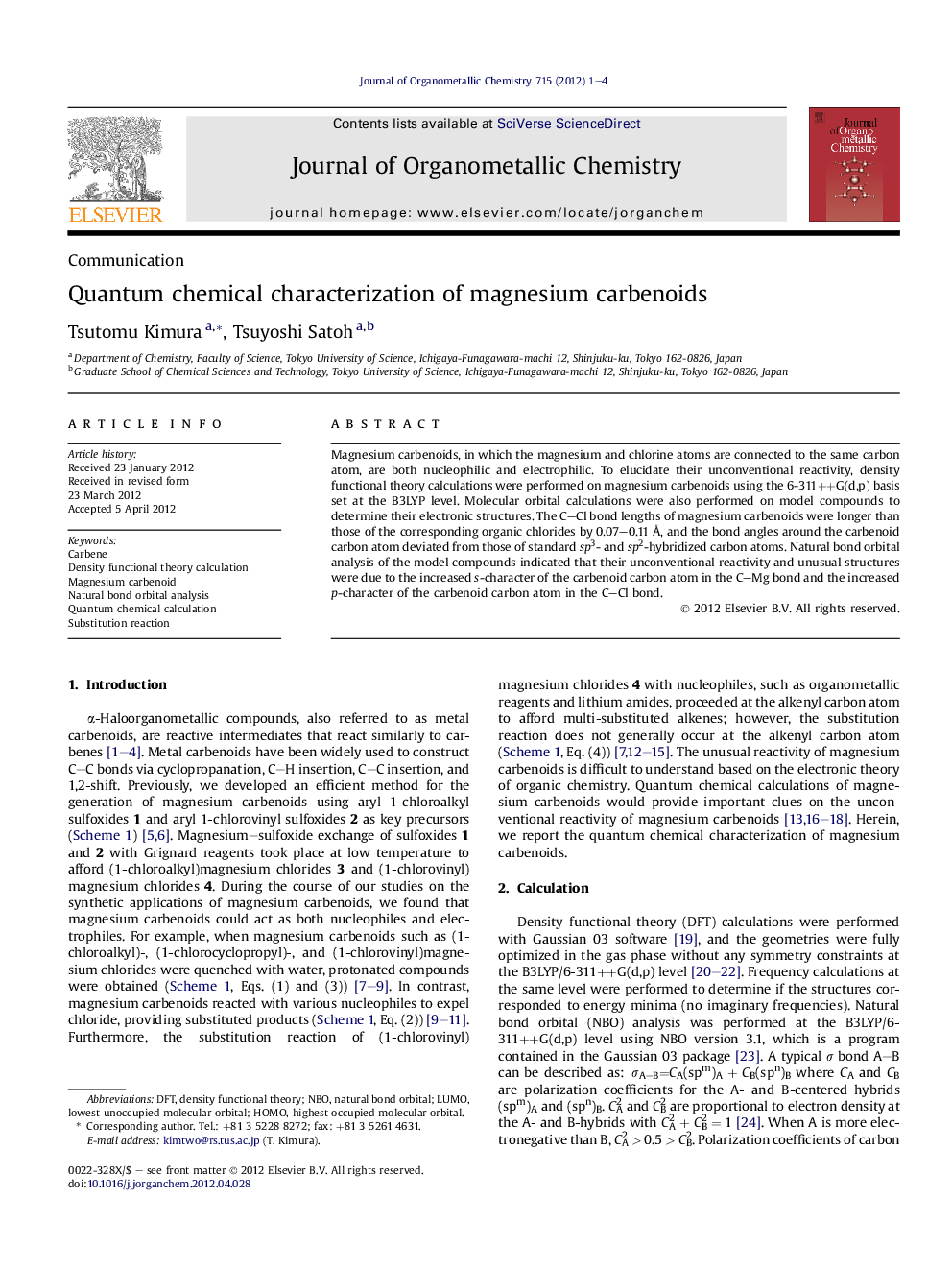| Article ID | Journal | Published Year | Pages | File Type |
|---|---|---|---|---|
| 1324027 | Journal of Organometallic Chemistry | 2012 | 4 Pages |
Magnesium carbenoids, in which the magnesium and chlorine atoms are connected to the same carbon atom, are both nucleophilic and electrophilic. To elucidate their unconventional reactivity, density functional theory calculations were performed on magnesium carbenoids using the 6-311++G(d,p) basis set at the B3LYP level. Molecular orbital calculations were also performed on model compounds to determine their electronic structures. The C–Cl bond lengths of magnesium carbenoids were longer than those of the corresponding organic chlorides by 0.07–0.11 Å, and the bond angles around the carbenoid carbon atom deviated from those of standard sp3- and sp2-hybridized carbon atoms. Natural bond orbital analysis of the model compounds indicated that their unconventional reactivity and unusual structures were due to the increased s-character of the carbenoid carbon atom in the C–Mg bond and the increased p-character of the carbenoid carbon atom in the C–Cl bond.
Graphical abstractMagnesium carbenoids are reactive intermediates that can react with both nucleophiles and electrophiles. DFT calculations suggested that the increased s-character of the carbenoid carbon atom in the C–Mg bond and the increased p-character of the carbenoid carbon atom in the C–Cl bond contribute to their unconventional reactivity.Figure optionsDownload full-size imageDownload as PowerPoint slideHighlights► Magnesium carbenoids are nucleophilic and electrophilic. ► Geometry optimization and NBO analysis were performed on model compounds. ► The hybridization of carbenoid carbons was responsible for their unusual reactivity.
